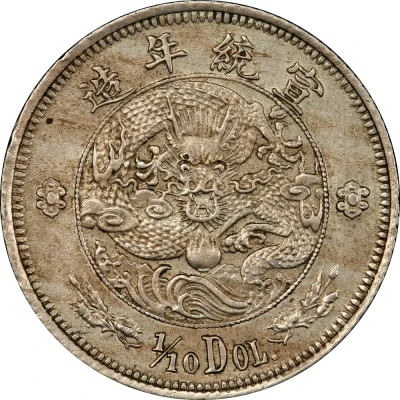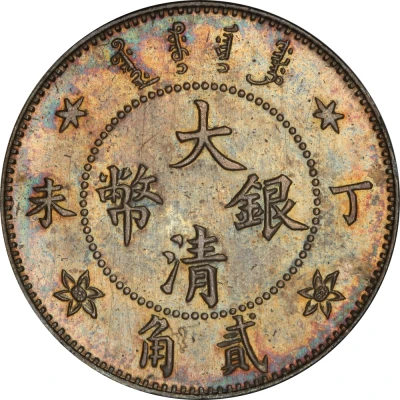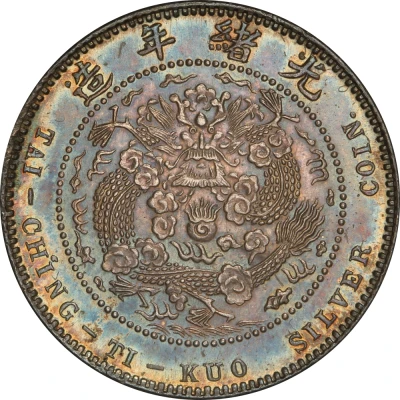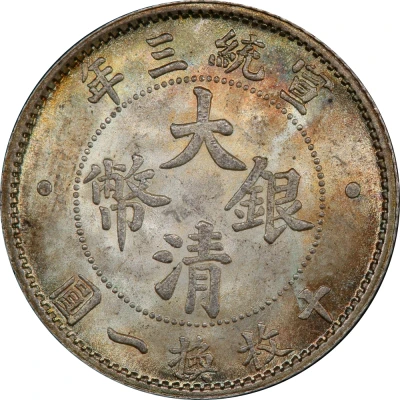
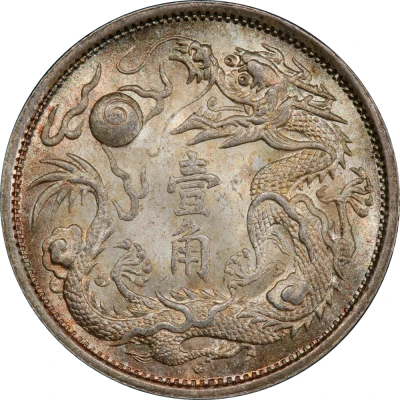

© PCGS
1 Jiao - Xuantong
3 (1911) year| Silver | 2.70 g | 19 mm |
| Issuer | Empire of China |
|---|---|
| Emperor | Qing dynasty › Xuantong (宣統帝) (1908-1912) |
| Type | Standard circulation coin |
| Year | 3 (1911) |
| Calendar | Chinese - Xuantong era |
| Value | 1 Jiao (0.1) |
| Currency | Yuan (1903-1912) |
| Composition | Silver |
| Weight | 2.70 g |
| Diameter | 19 mm |
| Shape | Round |
| Technique | Milled |
| Orientation | Medal alignment ↑↑ |
| Demonetized | Yes |
| Updated | 2024-10-04 |
| Numista | N#17676 |
|---|---|
| Rarity index | 90% |
Reverse
Two Chinese ideograms surrounded by dragon with pearl to the upper left.
Script: Chinese (traditional, regular script)
Lettering:
壹
角
Translation: 1 Jiao
Interesting fact
The 1 Jiao - Xuantong 3 (1911) coin from the Empire of China was designed by a French sculptor named Paul-Émile Bouchard, who was commissioned by the Chinese government to create a new currency for the country. Bouchard's design features a portrait of the Guangxu Emperor on the obverse (front) side of the coin, and a phoenix on the reverse (back) side. The phoenix is a symbol of good fortune and prosperity in Chinese culture, and it was hoped that the coin would bring prosperity to the country. Unfortunately, the coin was issued during a time of political turmoil and economic instability in China, and it did not have the desired effect. Nevertheless, it remains an interesting piece of history and a unique example of Chinese numismatics.

